Think about a story you love—a documentary, a podcast episode, a novel. What about that story makes it stay with you? Chances are it moved you tofeelsomething.
A brand story contains many of the same elements that draw you into your favorite book or film. And it’s a story that serves a similar purpose. It has characters (you, your customers), a conflict (personal or customer pain point), rising action (your journey to solve that problem), and a climax (the launch!). Most importantly, it leaves the reader or viewer with a feeling.
If you think of brand storytelling in terms of just storytelling, you free yourself from the constraints of what you think a brand storyshouldbe and allow yourself to write the story you want. There are no rules here—but there are plenty of guidelines that experienced storytellers use to catch and keep attention. Join us in coloring outside the lines, won’t you?
Meet the storytellers
A brand's story is often closely tied to a founder’s original vision for their business or one they uncover along the way. As a result, they’re often the only people capable of sharing their brand’s origin. So, I spoke with the practitioners—founders who have successfully used storytelling to engage and build audiences and grow their businesses. Here they share their personal journeys and experiences, alongside their best-kept secrets for crafting a compelling brand story.
Charlotte Cho
Author, licensed esthetician, and co-founder ofSoko GlamandThen I Met You

When Charlotte took the leap and launched Soko Glam in 2012, she had no business or beauty experience. She seemed an unlikely founder—at first blush. But it was Charlotte's unconventional approach that came to define her now widely respected brand.
Soko Glam is, in many ways, the manifestation of Charlotte’spersonal brandand skincare journey. She took her audience along for the ride as her business got off the ground, candidly sharing her ups and downs and building a following through genuine storytelling. In 2018, she launched her own skincare line, Then I Met You, a brand built around an ethos close to her heart.
Lauren Chan
Model, former fashion editor, and founder and CEO ofHenning

Lauren moved from Canada to New York to work as a plus-sized model before transitioning to journalism—where she later became a renowned expert on plus fashion.
Dismayed by the lack of clothing options in her size, Lauren launched her own plus brand, Henning, in 2019. For six months, she thoughtfully built a community around the story of the brand, before officially releasing any product. Her own experiences are tightly woven into the brand’s “why.”
Ashley Jennett
Mom, registered nurse, photographer, and owner ofThe Bee & The Fox
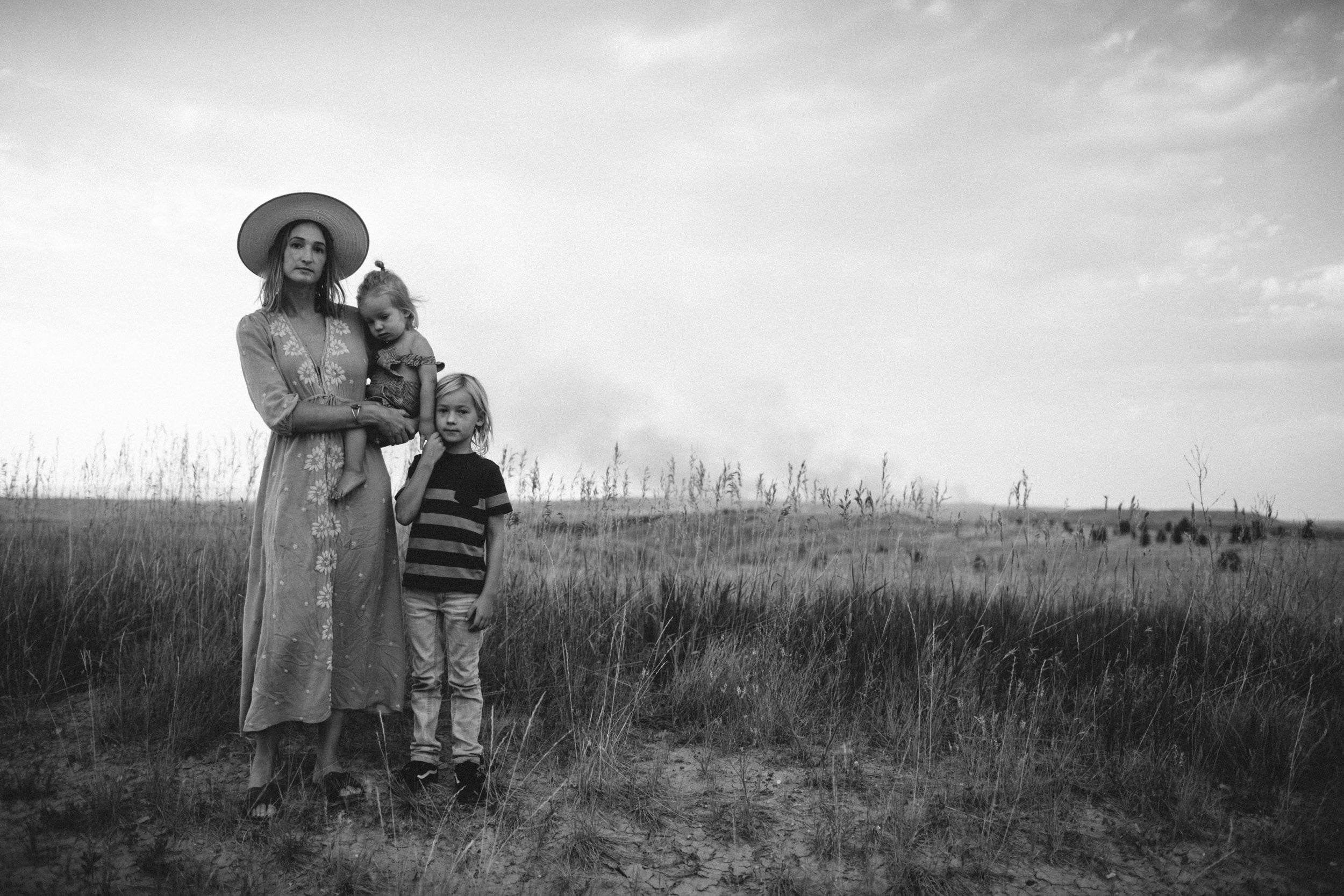
阿什利,网上贸易的护士,她的t恤business happened quite by accident. It was a brand born out of a creative partnership with her best friend as they visually documented their lives and travel. The Bee & The Fox launched quietly with kids’ tees but caught a swelling wave of attention when it introduced its Mama Bird shirt for women. The business is now Ashley’s full-time job—on top of being a full-time single mom. Her story of motherhood and passion for speaking up are evident at every touchpoint—even across the fronts of the shirts themselves.
I also consultedKarlee Bedford, Head of Brand Marketingfor our Brand and Communications team at Shopify, to get some expert insights. Karlee brings to her role at Shopify more than a decade of experience building and growing brands in the advertising industry.
Shortcuts ✂️
What is a brand story?
Before we talk about brand storytelling, we should talk aboutbrand—a term that often gets confused with “branding.” “Brand is so much bigger than alogo或指导文档,”Karlee说。“品牌elicits afeeling.” She refers to Seth Godin’s definition of brand that describes it as “a set of expectations, memories, stories and relationships that, put together, impact a consumer’s decision to choose one product or service over another.”
Let’s take two seemingly similar examples: Nike and New Balance. While their products may not differ very much functionally, “they behave differently and have very different perspectives,” says Karlee. “Consumers in the market for sneakers have a different feeling about what each brand offers them emotionally.”
Brand is so much bigger than a logo or a guideline document. Brand elicits a feeling.
Karlee Bedford
Brand storytelling uses narrative to shape and communicate the essence of your brand to your customers. It is a mix of facts (the who, what, when) and feelings (the why) that tell the world what you’re about and why they should care. A good story infuses a brand’s values: what do you stand for?
A brand story can become the North Star for a growing company; a beacon that guides what a company does in addition to what it says. It can act as the foundation of a set ofbrand guidelinesthat keep your mission, message, and voice consistent, even as you scale.
你的品牌故事,像任何好的故事,应该是captivating, human, and honest. It should make people feel something. That feeling then becomes the catalyst for a desired action—join, donate, follow, sign up, buy.
Why take a storytelling approach?
The 1946 film这是a Wonderful Lifetells the life story of George Bailey, a man who gives up his dream to do the right thing, only to find himself broke and miserable. But then! When it all seems quite hopeless for poor George, we meet Clarence, an angel sent to help our woe-stricken protagonist. A Christmas miracle! Clarence shows George a world without George that is, frankly, much worse than onewithhim. An awakening. Not a dry eye in Bedford Falls.Fin
我看过这部电影至少两个十几次。这是a family tradition, and without it, Christmas just wouldn’t be the same. The story, for me, is the magical reindeer dust on the entire holiday experience. Nope, it’s not the eggnog and rum inducing these warm and fuzzy feelings—it’s the power of storytelling. Neuroscience agrees.
One Berkeley studyfound that the brain produces a neurochemical called oxytocin—sometimes referred to as “the love hormone”—when people watch or hear a moving story. Oxytocin creates feelings of empathy and compassion, and higher levels of the hormone are shown to produce generosity and trust.
Storytelling is an opportunity to emotionally connect with consumers.
Karlee Bedford
For a brand, that’s good news. “Storytelling is an opportunity to emotionally connect with consumers,” says Karlee. “It offers the consumer more than just a product or service—it offers them an experience.” If you can move your audiences to feel something it’s easier to build trust and an initial connection, laying the foundation for turning them into a customer.
Lauren’s experiences were integral to her brand story because it’s rooted in her most vulnerable moments. She launched mere months before the onset of COVID-19 and the escalation of the Black Lives Matter movement. “Right now we need to be deeply human,” she says. And because Henning was built upon that premise, it was natural for the brand to use its voice. “It makes sense to focus on community and conversation.”
Storytelling “can affirm our own beliefs and perceptions, but more often, it challenges them,”sayswriter and historian Cody C. Delistraty. This is a cornerstone of The Bee & The Fox, a brand that aims to inspire conversation. “The heart of the brand is always going to be in the content. It’s in what we stand for. It’s the organizations we donate to,” Ashley says.
Authenticity and trust
“Relationships between humans take time to build, and the same is true for brands and their customers,” says Karlee. “It requires spending time together, sharing experiences, having conversations, and building trust over time.”

Lauren believes the people your brand serves should have a seat at the table, making decisions. “Part of the reason that plus-sized brands have largely failed in the past is that they’re not founded or run by plus-sized people,” she says. “And it’s evident.” Lauren is her own customer, so she’s able to share a common experience with them. The authenticity shines in her brand story and visuals.
Charlotte’s authentic self also plays a central role in both Soko Glam and Then I Met You—and their stories. For her, gaining trust meant being candid about her own lack of credentials. “Most people buy skincare lines because they come from a dermatologist,” she says. “Hey, I didn’t even wash my face a couple of years ago.” Charlotte used blogging as a way to share lessons from herpersonal skincare journey—and that vulnerability resonated with a growing Korean beauty fandom.
You can’t sell authenticity and you really can’t teach it.
Ashley Jennett
Even as Charlotte has gained hard-won experience—authoring a book on skincare and earning her esthetician licence—she maintains an enthralling level of transparency with her audience through the ups and downs. “I speak about this openly, even on my social,” she says, “about how stressed I was for the launch of Then I Met You.”
One of the frequent pitfalls in building a brand, says Karlee, is “inventing brand benefits, rather than mining and uncovering their genuine purpose and values.” Insincerity is hard to hide. Bold messages and firm stances won’t read as authentic no matter how many buzzwords you use. “You can’t sell authenticity and you really can’t teach it,” says Ashley.
You and your brand
You, the founder, bring your brand into being, but let’s be clear: you are not the star. You are the narrator, the supporting character, the story device that lets the main character shine. Your customer? She takes the lead.
Your story becomes the structure upon which your customers write their own.
But, your role is critical. Your story becomes the structure upon which your customers write their own. If they see themselves in your struggles and triumphs, you’ve cast them a role in the center of your brand’s story.
The decision to put your name and face at the center of your brand story is a personal one. For many reasons, you may choose to be more removed. While Ashley’s About Us page on The Bee & The Fox’s website tells a beautiful and personal story, her own face and name are obscured. Instead, the faces captured in the brand’s photography are representative of the brand’s diverse customers.

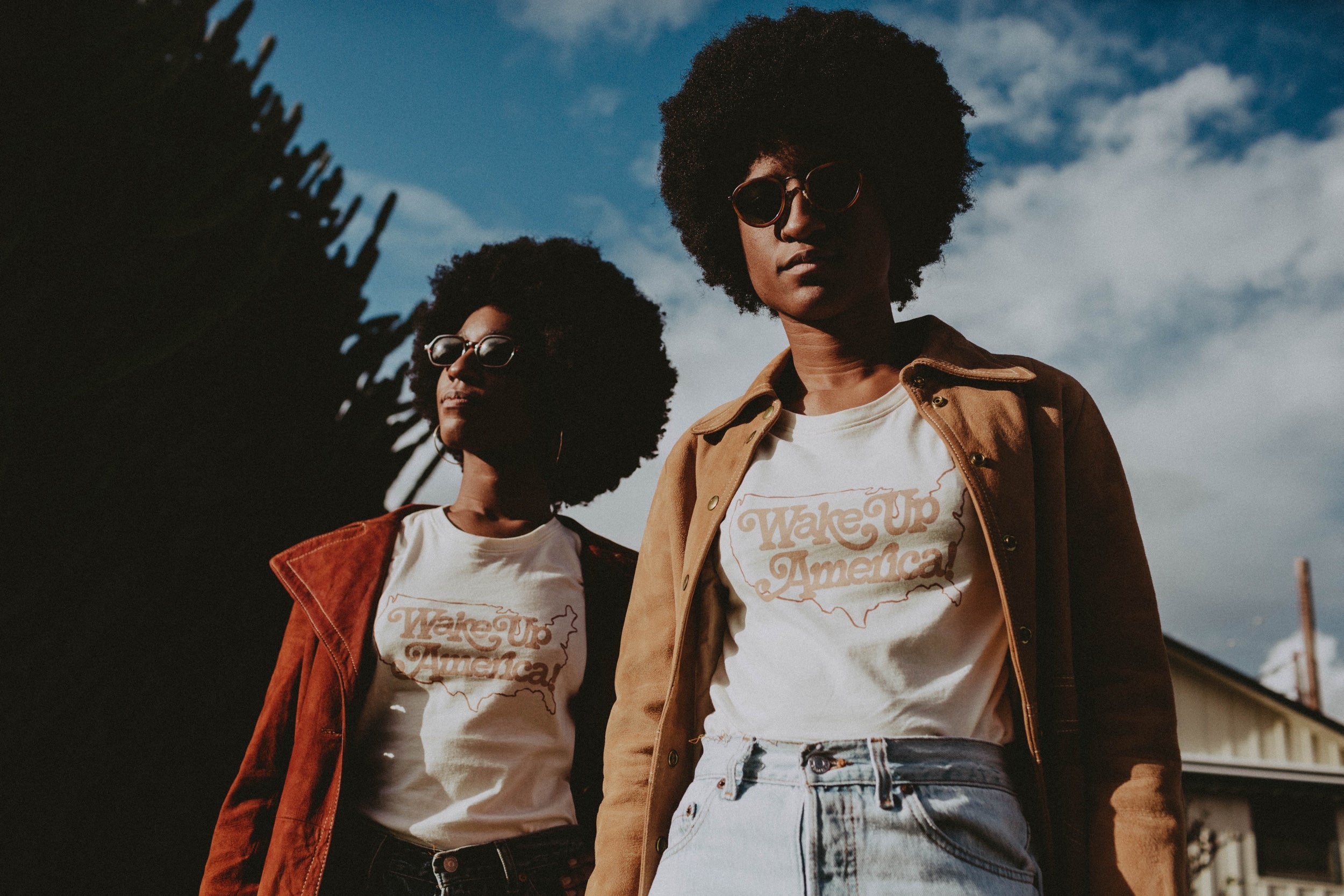
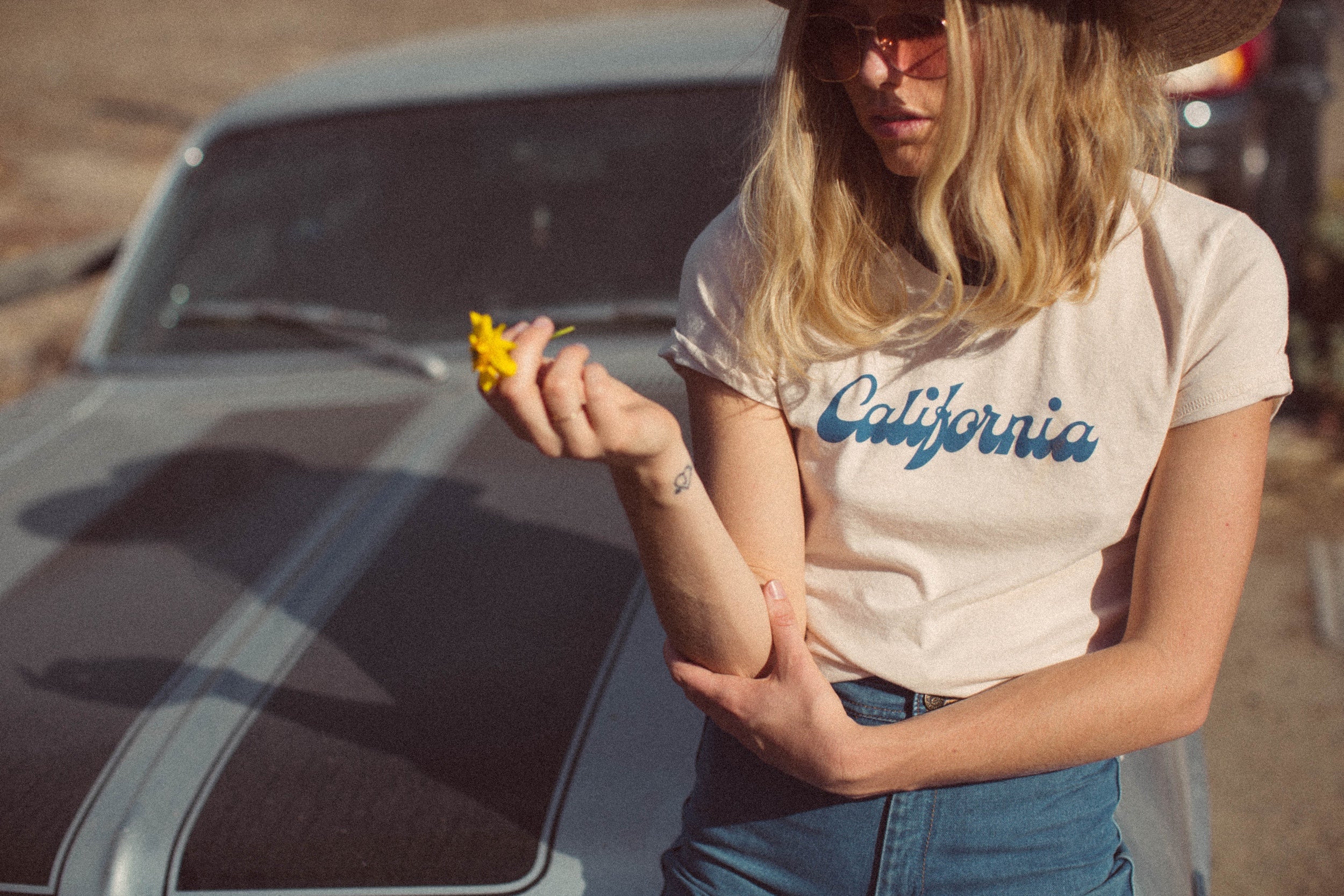
In Lauren’s case, she tells me that Henning did need a face. “Our business is one that is intensely emotionally driven. Plus-sized fashion—for people who have been marginalized by this industry—is even more emotional,” she says. “It required a human being, it required warmth, it required understanding and community.”
Answering your “why”
A great story always has a “why.” It is the main character’sraison d’etre,the driving force behind the journey to the what or the where. In a brand story, that “why” could be a pain point—a gap in the market that you aim to fill—or fulfillment of a passion. The answer to “why did I create this?” could become the jumping off point for your story.
When Lauren was working as an editor, she met with some of the biggest names in fashion—while wearing clothes that didn’t express her style or make her feel confident. “I was limited to cheap, crappy clothes,” she says. “I was literally having wardrobe malfunctions at work and skipping meetings because my clothes were embarrassing.”
Lauren’s frustrations, she understood, were personal, but also shared by many women who wear plus sizes. Her “why” was ensuring that other women didn’t have to experience the same. “When plus-sized women only have one type of fashion and they aren’t able to express themselves, they’re not able to feel authentic,” she says.“The effects of that are just mentally detrimental.”

Free Worksheet: Brand Storytelling
Use this handy exercise as a guide to help you craft a compelling brand story and build a loyal audience through the power of storytelling.
Get our free Brand Storytelling Worksheet delivered right to your inbox.
Almost there: please enter your email below to gain instant access.
We'll also send you updates on new educational guides and success stories from the Shopify newsletter. We hate SPAM and promise to keep your email address safe.
Story elements
The principles of telling a captivating story are roughly the same across mediums. It’s the quality of what’s expressed, not the format, that determines whether a story resonates.
We can employ and learn from the same storytelling techniques that film directors or novelists use to hook their audiences. I know, literaldecadesmay have passed since you were last expected to painstakingly pick apartThe Old Man and the Sea. But understanding the underlying elements of a well-told story is useful as a checklist of sorts.
What are the elements of a good story? Generally, a narrative consists of:
- Exposition: characters, setting, and details that help the reader visualize the story
- Conflict: a crisis or tension point that may change the course of the character’s path
- Rising action: the lead-up to the climax
- Climax: the defeat, rebirth, or aha moment; the inception of something new
- Falling action: also called dénoument or resolution
✏️ As an example, let’s use these story elements to create the basis for Henning’s story:
- Characters: Lauren, plus-sized professional women (her customers)
- Setting: New York, offices and spaces where professional women operate
- Conflict: Lauren couldn’t find clothing that represented her inner self outwardly
- Rising action: she began to have wardrobe malfunctions and miss meetings, and the lack of appropriate clothing options affected her psychologically
- Climax and resolution: she became fed up with the options in plus fashion and decided to launch her own brand. Henning grew an audience based on its authenticity and commitment to designing clothes for plus women, by plus women
The Hero’s Journey is a popular story format that mirrors the path of many entrepreneur types and may be an ideal framework for you.这是a Wonderful Life’s George Bailey took a circular journey and found himself back where he started, changed by his experiences. Show the destination, show where it all began, and then bridge the gap.
另一个尝试锻炼是映射你的故事on Disney’s story spine—a framework upon which many of the company’s films are built:
The best inspiration will likely come from the stories that have moved you in the past. What are some of your favorite movies, books, podcasts, or other brand stories? What do they have in common? What storytelling devices do they use effectively to inspire feeling?
The customer as the hero
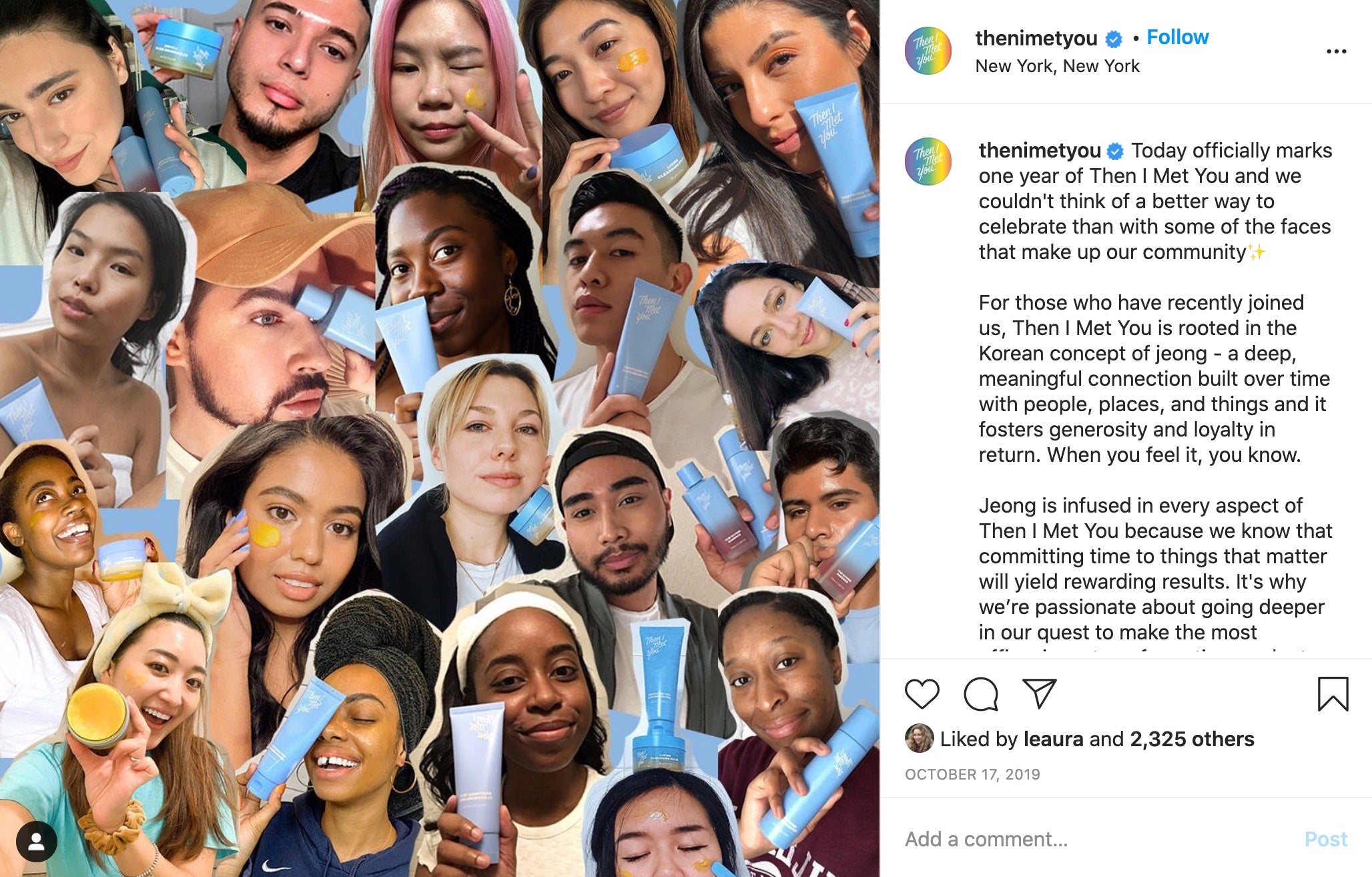
Remember to focus on your story’s central character: your customer. As you craft your story, hold them in your mind and let their needs and pain points guide you. “If you can’t communicate who you are as a brand and the type of person who would identify with your core values, then you won’t be able to sell it to them,”saysmarketing professional Joey Ng.
Incorporating our customers’ interpretation of our brand has been such a big cornerstone of Then I Met You and has allowed us to thrive.
Charlotte Cho
As you grow, incorporating your customer’s story into your brand will become more natural, so long as you create a dialogue with your audience—as they begin to share their experiences, you can gather these stories and use them to build upon your own. Lauren had this in mind for Henning before she even had a product to sell. She knew customer voices would help shape the brand's foundations, and she now includes some of her best customers in photoshoots.
Charlotte opted to act as the curator of the stories her customers were already telling. She discovered that her fans were creating their own art—unprompted—around her products and brand. “They sometimes take better photos than we do!” she says. Then I Met You recently launched anart showand competition to highlight some of this work on the brand’s site. “Incorporating our customers’ interpretation of our brand has been such a big cornerstone of Then I Met You and has allowed us to thrive,” she says.
Visual storytelling
Great storytelling is determined by form, not format. The right medium is the one that best supports your brand narrative: could you tell your story through video, audio, photography, or design?
Lauren says that visual storytelling is important to Henning. Her customers are successful women “who want to represent themselves in a chic and sharp way.” To attract that audience, Henning is very deliberate about its voice and visuals. “I really wanted to create a brand where these women could immediately see that they belonged here.”



The brand speaks to a group that has historically been ignored by the fashion world—customers need to see themselves represented in Henning’s story. “Fashion images have long dictated what women at large in this culture think about themselves,” says Lauren. “When we only see one type of woman in fashion—thin, white, Eastern European, young, and tall—everyone else suffers negative psychological effects.”
When and where to use story
The most obvious place to tell your brand story is on anAbout Us page. It’s a dedicated space on your website designed specifically for this purpose. You can use a combination of written narrative, video, and visuals, all on a completely blank canvas.
But, great marketing is about meeting your customers wherever they are, even before you get them to buy. Storytelling is a powerful tool to build brand affinity and trust at some of these earliest touchpoints, such as social media posts or ads. And don’t forget to remind current customers why they support you—tell your story on packaging and add a personal touch to your customer service communications.
️ Where to tell your story (and some examples of brand storytelling to inspire you):
- Social media bios and posts (examples:BLK MKT Vintage,Henning)
- Website About page (example:Tipu’s Chai)
- Website home page (examples:Pearl Morissette,Mission Mercantile)
- Product page (example:Boy Smells)
- Product packaging
- Shipping materials orpackage inserts
- Email communications
- Internal brand guides
- Staff hiring and training (job descriptions, internal learning resources)
- Interviews and press materials
- Blog or publication (examples:Wealthsimple,The Klog by Soko Glam)
- Audio: podcast
- Video: produced or livestream (example:Nike)

Storytelling as you scale
As the founder, you draft the first version of your story, closely controlling the consistency of your message. But as your brand scales, you may start to delegate some of the storytelling to partners, freelancers, agencies, or staff. How do you ensure that you keep your voice and story steady and true to your original vision?
This became an issue for Ashley as she began to work with a marketing team. She started to see communications popping up in her feed from her own brand that felt like they were coming from someone else. She realized that it was an area of the business that she couldn’t fully let go. “I have to have that control,” she says. “Having our voice on anything and everything that we put out there is absolutely essential to me.” Now, Ashley has a closer relationship with her marketing team’s work.
Ashley hired a former neighbor to handle her customer service, because it was important to her that this critical touchpoint was handled by someone she knew intimately.
It was just very deeply important to me to have something strong to reference. That North Star is very clear to us.
Lauren Chan
Lauren’s approach was to anticipate scaling. She worked on the brand for months before launch. That work resulted in assets like a brand style guide that helps align anyone she brings onto the team. “It was just very deeply important to me to have something strong to reference,” she says. “That North Star is very clear to us.”
For Charlotte, scaling and expanding the number of voices that represent her brand has been a positive experience. The brand is still relatively small, she says. “It's not like we’re Sephora or Ulta.” Therefore, Charlotte is still intimately involved with the brand’s messaging. But other faces and voices have started to emerge in some of her videos and blog posts. “My curation videos used to be just me,” she says. “But now I have people from the team come and host with me.”
How tell your brand story

First, this is your story. Delegating theentiretask of writing your brand story could be a mistake. Sure, the professionals can help polish your story, but you should be heavily involved in this process. “We can’t outsource our voice,”saysactivist and entrepreneur Leanne Mai-ly Hilgart. “It’s our heart, it’s our soul, it’s our story.”
What does your brand believe? And why does your brand exist? From there you can define your audience’s core desire and the emotional offering that fulfills that audience’s desire.
Karlee Bedford
I attended a workshop in 2019 presented by storytelling pro Louis Richardson. “It’s not about getting them to buy,” he told us. “It’s about getting them to believe.” With that in mind, let’s get writing.
1. Start with the basics
“Define your conviction and purpose,” says Karlee. “What does your brand believe? And why does your brand exist? From there you can define your audience’s core desire and the emotional offering that fulfills that audience’s desire.” Only then, she says, can you start to dive into the finer details, like voice, tone, and design.
2. Ask questions
If you’re not a natural storyteller, start with brainstorming exercises to get the creative juices flowing. Answer the following questions (point form is fine at this stage):
- Why does your brand/company exist? Why did you start this business?
- What’s your personal history? Include what’s relevant to your entrepreneurial journey or the inception of your brand.
- Who are your main characters? You? Your target customer? Mentors? Partners?
- What’s the setting, if relevant? Is place important to your brand? Why? (This is important for brands that focus on a local community or were inspired by travel, for example.)
- Where’s the tension? What action followed? What problem are you trying to solve?
- What’s your mission? What do you aim to accomplish through this brand?
- Who’s your audience or ideal customer? Be specific. What do they currently believe? What do you want them to believe after engaging with your brand and story?
- How would you like others to describe your brand to a friend?
- What do you stand for? What are your personal values? How will those be reflected in your brand?
For a simple template, access our free worksheet:

Free Worksheet: Brand Storytelling
Use this handy exercise as a guide to help you craft a compelling brand story and build a loyal audience through the power of storytelling.
Get our free Brand Storytelling Worksheet delivered right to your inbox.
Almost there: please enter your email below to gain instant access.
We'll also send you updates on new educational guides and success stories from the Shopify newsletter. We hate SPAM and promise to keep your email address safe.
3. Listen to your community
Your story should be authentic and relevant, says Lauren. And though your brand story should be personal, it shouldn’t necessarily be created in a vacuum. “It shouldn’t just be driven by you,” she says. “Get out there and talk to your community to understand the collective experience of the people that you hope to speak to.”
Storytelling helped our community understand what we care about. How we’re actually living our ethos of giving back.
Charlotte Cho
4. Write a story, not a list of facts
“Your About page is an interview,”saysmarketer Melyssa Griffin. How would you describe your brand in conversation to an employer or friend? Use a basic story structure outlined in this article to connect the answers to your questions above in a way that is conversational, engaging, and well-paced. And remember to read it aloud—is this how you would speak? “Infuse the things that you stand for,” says Ashley. If you’re passionate about your story, it will be reflected in your writing.
Charlotte weaves very personal storytelling into Then I Met You’s product development and campaigns. Her honeydew lip mask’s ingredients were inspired by her grandmother, who would serve the fruit to her when she was a child. And when she, like many entrepreneurs, stepped up to help support those affected most byCOVID-19, she focused on grocery workers, inspired by her dad, who works at a grocery store. “Storytelling helped our community understand what we care about,” she says. “How we’re actually living our ethos of giving back.”
5. And the moral of the story is…? ❤️
Many good stories end with a moral or lesson. Think of any of Disney’s films. For brand stories, let’s refer to this as a call to action. Your story should always have a takeaway for the reader that is actionable.
Remember that the story’s goal isn’t always to compel someone to buy—at least not yet. But what other action do you want the reader to take? Should they follow you? Complete a survey? Read more into the causes you support? How will you keep the audience engaged and nurture them further into your story? Maybe the takeaway is simply afeelingyou want them to have.
“People will forget what you said, people will forget what you did,” Maya Angelou once said, “but people will never forget how you made them feel.”
Seeking feedback—and when to act on it
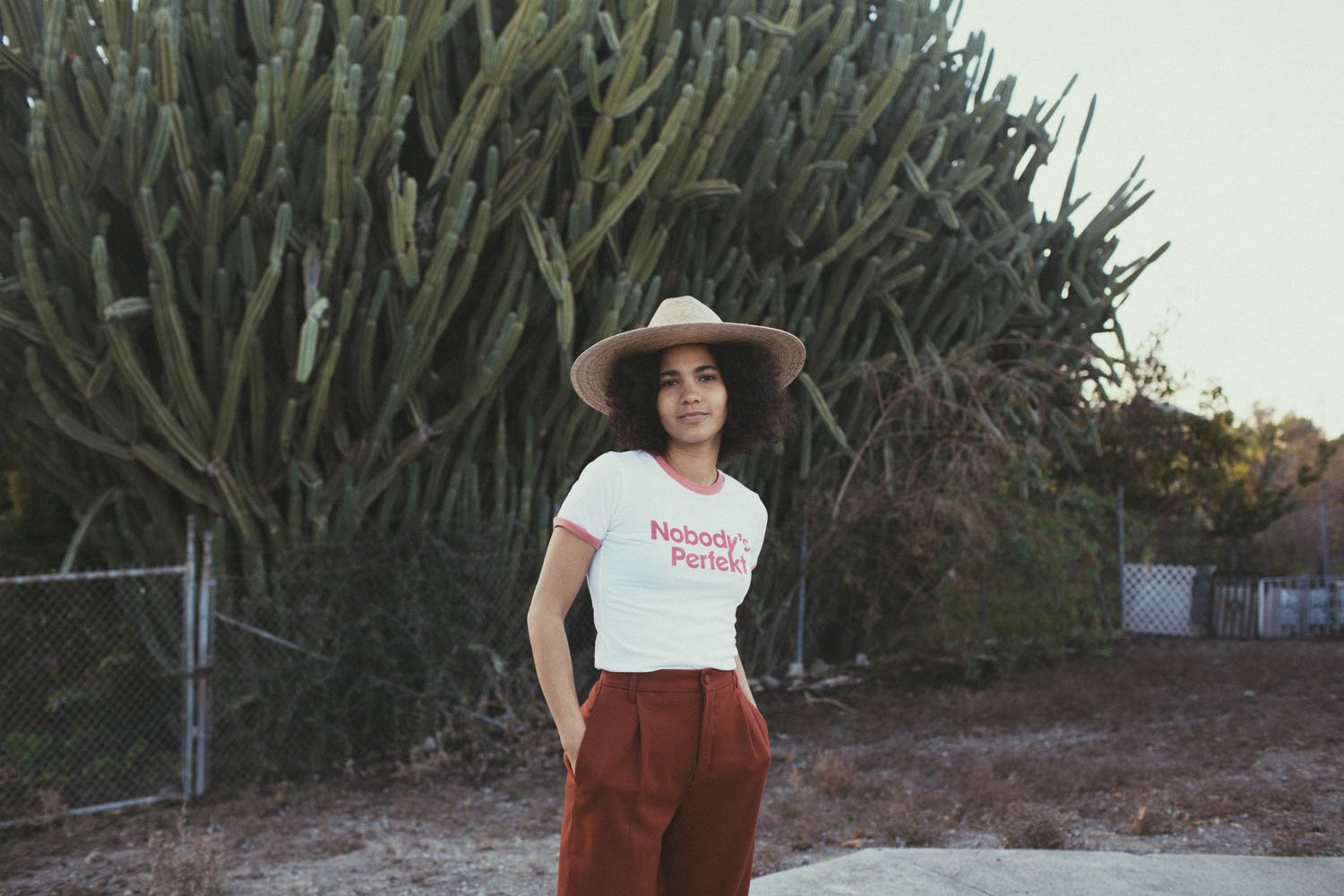
Working with an editor is a great first step to ensure that your voice is presented in a polished and professional way. If you don’t have the budget to hire a pro, any second set of eyes will do. Better yet, share your draft with several friends who will give you honest feedback, along with people who resemble your ideal customer.
Once your brand story is out in the world, that doesn’t mean it’s set in stone. Seek feedback from your customers constantly. There are several ways to gather this feedback:
- Run surveys or polls delivered on social, on your website, or via email marketing.
- Pay attention to comments, feedback, and reviews shared across your various channels.
- Ask questions of your audience directly in social content (less formal than a poll or survey).
- Offer free consults via video or chat—you can learn as much from the experience as your customer.
While it’s important to take in feedback, know when to act on it and when to let it lie. Not every customer is your best customer, nor are they a brand advocate. You’ll need to know when to stick to your values.
Ashley’s brand encourages discussion around the topics that are important to The Bee & The Fox. Sometimes things get heated. “I always keep the brand open to free speech,” she says. Occasionally a comment will rub her core community the wrong way. “People will say, ‘Can you please just block this person?’ or, ‘Just take this person’s comment down,’” she says. “And I will never do that. I’m OK being divisive.”
Brand storytelling FAQ
How do you write a brand story step by step?
- Start with the basics like the origins of your brand name and why you started
- Answer questions like: Why does my company exist? What’s my mission?
- Listen to your community and craft your story around what’s important for your customers
- Write a story, not a list of facts
- End with a lesson or goal. What action do you want customers to take when they’ve engaged with your story?
What is included in a brand story?
A brand story should include information about you as the founder, the background on why you started the business, the business’ mission and values, the value the brand brings to the market and customer, and a call to action.
What is a good brand story?
A good brand story centers the customer. It understands its audience and what’s important to them. It answers customer questions like, “What’s in this for me?” And, it inspires a feeling. A good brand story achieves its aim of compelling customers to feel connected with the brand and take action.
How do I tell my brand story?
Your brand story can show up at every touchpoint with your customer. It can appear on About Us pages, in the footer of your website, in campaigns, and through customer communication. You can also tell your brand story visually through imagery on your site and social media platforms.
What are the key elements of a brand story?
The key elements of a brand story are the same as the key elements of your favorite novel: characters (you, your customers), a conflict (personal or customer pain point), rising action (your journey to solve that problem), and a climax (the launch or product).
Feature illustration by Cecilia Castelli


